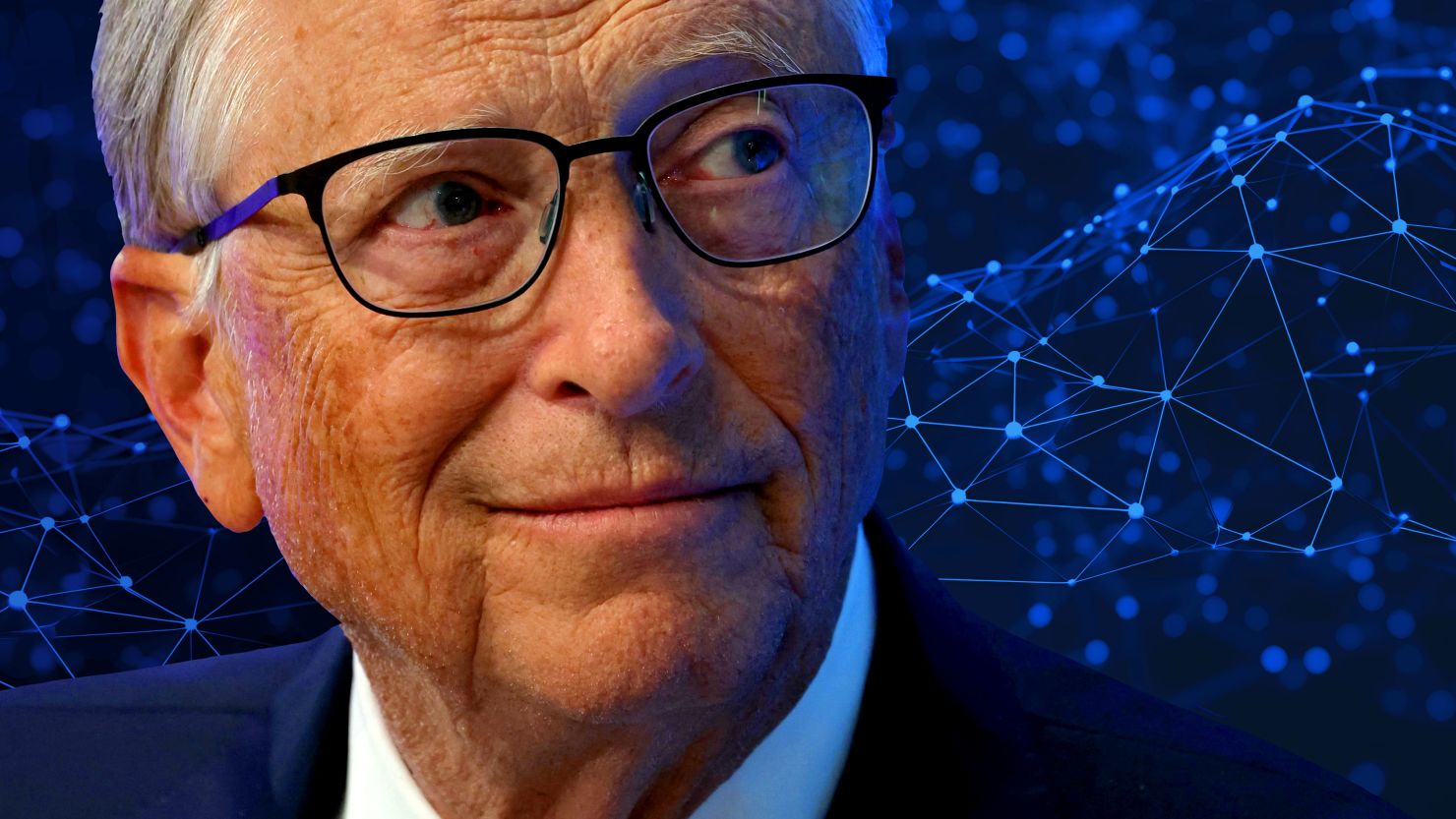Editor’s Note: Bill Gates is co-chair of the Bill & Melinda Gates Foundation and founder of Breakthrough Energy. This op-ed has been adapted from Bill Gates’ Year Ahead letter. The views expressed in this commentary are his own. View more opinion on CNN.
This year marked the first time I used artificial intelligence for work and not just as a novelty. I suspect the same is true for a lot of people. We are at the beginning of a huge technology transition right now. This is an exciting and confusing time, full of uncertainty about how AI will shape the years ahead — but it’s still clearer than ever how AI can be used to improve productivity and expand access to education, mental health care and more.

My work has always been rooted in a core idea: Innovation is the key to progress. It’s why I started Microsoft. It’s why Melinda and I started the Gates Foundation more than two decades ago. And it’s why lives around the world have improved so much over the last century.
Since 2000, the world has nearly cut in half the number of children who die before the age of five — and innovation is a big reason why. Scientists came up with new ways to make vaccines that were faster and cheaper but just as safe. They developed new delivery mechanisms that worked in the world’s most remote places, which made it possible to reach more kids, and created new vaccines that protect children from deadly diseases like rotavirus.
In a world with limited resources, you have to find ways to maximize impact. Innovation is the key to getting the most out of every dollar spent. And AI is about to accelerate the rate of new discoveries at a pace we’ve never seen before.
One of the biggest impacts so far is on creating new medicines. AI tools can speed up the process of drug discovery significantly, and some companies are already working on cancer drugs developed this way. A key priority of the Gates Foundation in AI is ensuring these tools are also used to address health issues like AIDS, tuberculosis and malaria that disproportionately affect the world’s poorest.
I believe there is huge potential to use AI to improve lives in low- and middle-income countries. I recently met with several innovators from developing countries during a trip to Senegal. They’re doing amazing AI research with the intention that it will one day benefit people in their own communities. Much of their work is still in the earliest stages of development, but it is setting the stage for a massive technology boom later this decade.
It’s impressive to see how much creativity is being brought to the table. The teams I met are researching how AI could combat antibiotic-resistant pathogens, help people better assess their risk for HIV, make medical information more accessible to health workers and more. I’m blown away by how innovators from developing countries are trying to tackle some of the biggest challenges facing their own communities.
Consider this horrifying statistic: A woman dies in childbirth or during pregnancy every two minutes. A team from India hopes to use artificial intelligence to improve the odds. ARMMAN’s large language model will one day act as a copilot for health workers treating high-risk pregnancies. It can be used in both English and Telugu, and the coolest part is that it automatically adjusts to the experience level of the person using it — whether you’re a brand new nurse or a midwife with decades of experience.
There is a long road ahead for projects like these. Significant hurdles remain, such as how to scale up projects without sacrificing quality and how to provide adequate backend access to ensure they remain functional over time.
In order to maximize their benefit, we need to tackle some of the broad risks associated with AI, including how to prevent bias and hallucinations. Hallucinations refer to times when an AI system confidently makes some claim that simply is not true, which could be disastrous in a medical context. Although some researchers think hallucinations are a problem inherent to AI technology, I don’t agree. I’m optimistic that, over time, AI models can be taught to distinguish fact from fiction. OpenAI, for example, is doing promising work on this front. (Full disclosure: Microsoft is a major investor and partner in OpenAI.)
We must also make sure AI products are tailored to the people who will use them. For example, I’m excited about an AI-based education tutor called Somanasi. The AI education tools being piloted today are mind-blowing because they are tailored to each individual learner, and Somanasi — which means “learn together” in Swahili — will bring those benefits to students in Kenya. It has been designed to align with local curriculum, as well as with cultural context in mind so it feels familiar to the students who use it.
I’m inspired to see so many researchers already thinking about how we deploy new technologies in low- and middle-income countries. If we make smart investments now, AI can make the world a more equitable place. It can reduce or even eliminate the lag time between when the rich world gets an innovation and when the poor world does. In high-income countries like the United States, I believe we are 18-24 months away from significant levels of AI use by the general population. In African countries, I expect to see a comparable level of use in three years or so. That’s still a gap, but it’s much shorter than the lag times we’ve seen with other innovations.
Reducing this gap is key to reducing inequities around the world. Even during challenging times, I can’t help but feel optimistic about the future when I think about how AI can be used to get game-changing technologies out to the people who need them faster than ever before.


